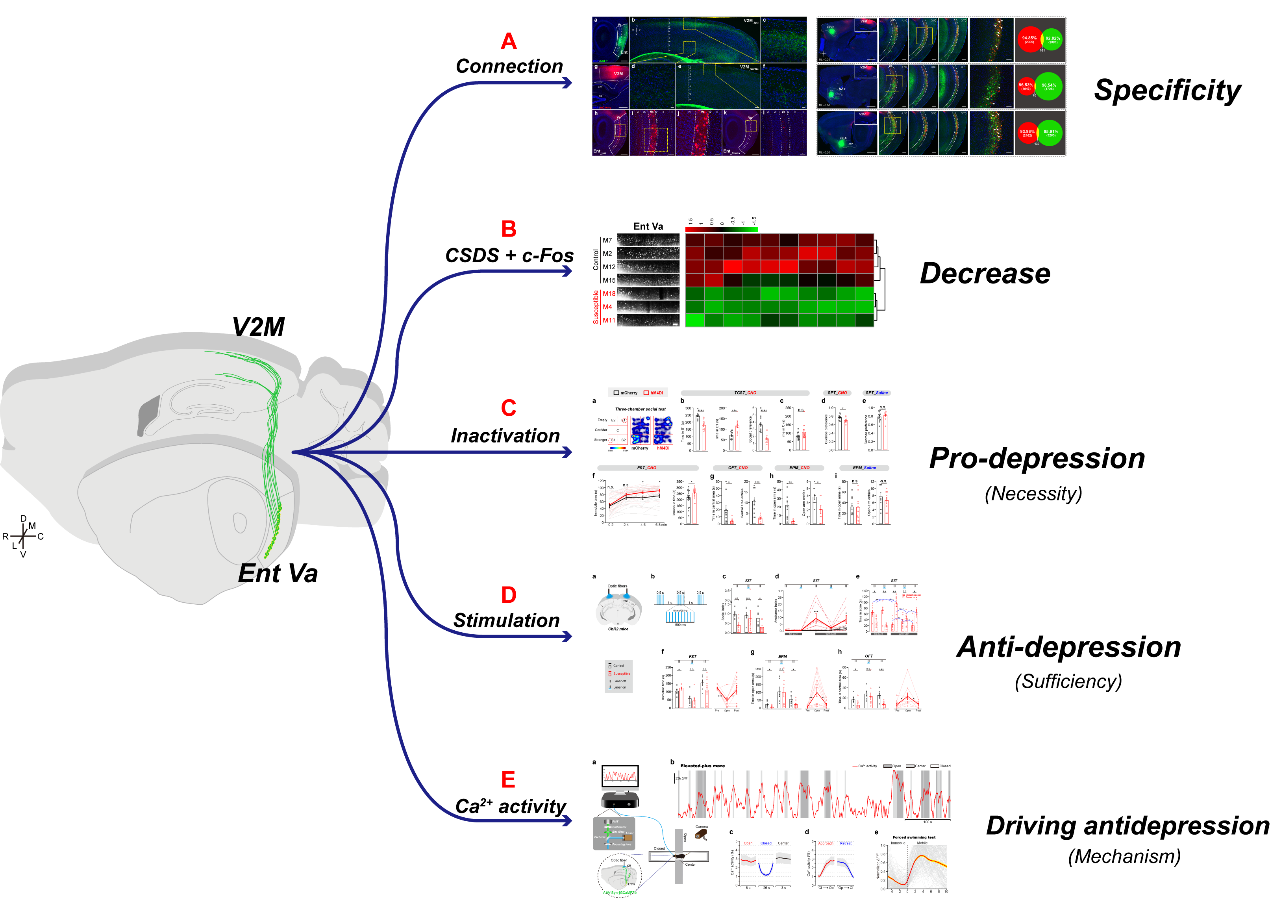Abstract
Major depressive disorder is viewed as a ‘circuitopathy’. The hippocampal-entorhinal network plays a pivotal role in regulation of depression, and its main sensory output, the visual cortex, is a promising target for stimulation therapy of depression. However, whether the entorhinal-visual cortical pathway mediates depression and the potential mechanism remains unknown. Here we report a cortical circuit linking entorhinal cortex layer Va neurons to the medial portion of secondary visual cortex (Ent→V2M) that bidirectionally regulates depression-like behaviors in mice. Analyses of brain-wide projections of Ent Va neurons and two-color retrograde tracing indicated that Ent Va→V2M projection neurons represented a unique population of neurons in Ent Va. Immunostaining of c-Fos revealed that activity in Ent Va neurons was decreased in mice under chronic social defeat stress (CSDS). Both chemogenetic inactivation of Ent→V2M projection neurons and optogenetic inactivation of the projection terminals induced social deficiency, anxiety- and despair-related behaviors in healthy mice. Chemogenetic inactivation of Ent→V2M projection neurons also aggravated these depression-like behaviors in CSDS-resilient mice. Optogenetic activation of Ent→V2M projection terminals rapidly ameliorated depression-like phenotypes. Optical recording using fiber photometry indicated that elevated neural activity in Ent→V2M projection terminals promoted antidepressant-like behaviors. Thus, the Ent→V2M circuit plays a crucial role in regulation of depression-like behaviors, and can function as a potential target for treating major depressive disorder.

|
Paper Link:https://www.nature.com/articles/s41380-022-01540-8
|
